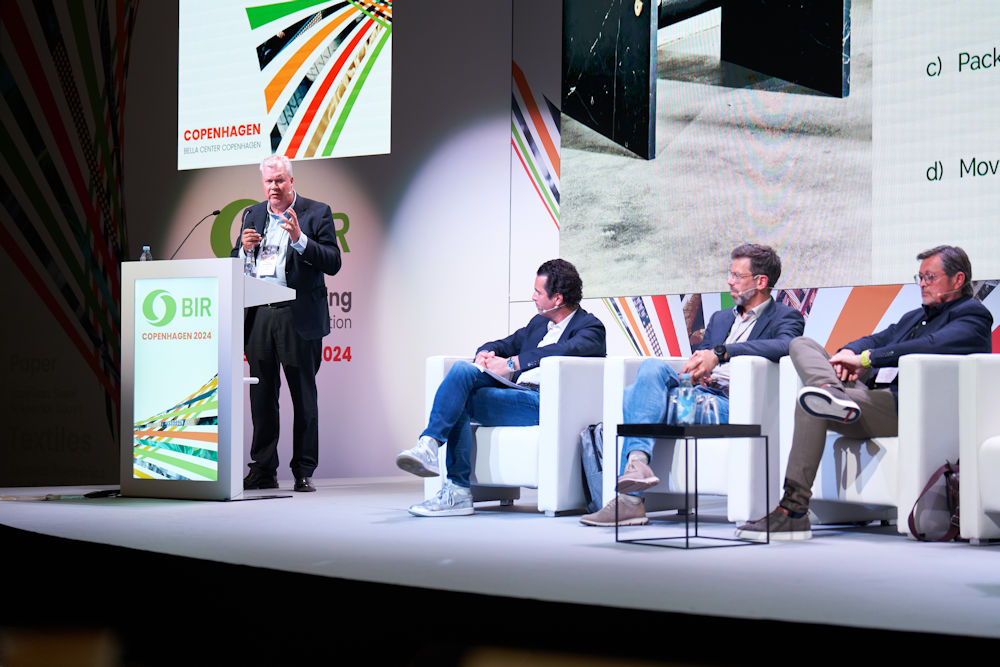At the recent BIR conference in Copenhagen, much discussion was given to the changing market for pyrolysis
In a relatively short period of time, pyrolysis has evolved from having “a very bad reputation” to becoming “a real solution” for end-of-life tyres (ELTs) through its increasingly sophisticated delivery of a range of highly sustainable raw materials, declared Robert Weibold in his opening remarks to the BIR Tyres & Rubber Committee session in Copenhagen on May 28.
Figures provided by the Managing Director of Austria-based tyre recycling and pyrolysis consultancy Robert Weibold GmbH indicated that annual global production of tyre pyrolysis oil (TPO), untreated char, and milled and pelletised recovered carbon black (rCB) currently amounted to, respectively, 1.7 million tons, 1.2 million tons and 180,000 tons from a tyre feedstock of 4.5 million tons.
According to Weibold, he expected annual rCB production to top 500,000 tons in three to five years. The final product can substitute virgin carbon black (vCB) in a range of applications, including the butyl liners, liner backings, sidewalls and treads incorporated into new tyres. Demand for rCB was “growing sharply” and its pelletised price had gradually decoupled from that of vCB, the speaker pointed out.
Demand pressure was also decoupling TPO from crude oil-based prices in more and more regions, according to Weibold. Although the vast majority of TPO was still being used as fuel, the focus was slowly shifting to closed-loop applications.
Europe’s annual ELT pyrolysis capacity is currently only 62,400 tons of ELTs – equivalent to 1.4% of the global total. However, Europe’s rapid emergence as an ELT pyrolysis hub would see the continent’s capacity surge to 671,900 tons per annum – or 11% of the estimated world figure – in three to five years from now.
Following on from Weibold’s assertion that investors and multi-nationals were taking an ever-greater interest in this field, BIR Tyres & Rubber Committee Chairman Max Craipeau of China-based Greencore Resources Ltd noted that pyrolysis was also gaining traction in the USA. “It is starting to become a very attractive industry,” he said. “It is no longer the poor relation of the recycling industry.”
As well as being the venue for the latest BIR Convention, Denmark is also home to the world’s largest tyre recycling company, Genan A/S, which processes up to 150,000 ELTs per day. The company’s Application Development Manager Michael Christensen provided details of some of the company’s ELT-derived products – including micronised rubber powder, granulate, pellets, rubber modifier and coated infill – as well as some of its latest research projects. For example, tests were currently taking place with a major car manufacturer to assess the use in absorbers of the textiles which make up around 10 per cent of the output fractions from ELT processing.
Comparing the environmental benefits of material recycling to co-incineration in cement kilns, Christensen put the greenhouse gas saving at 700 kg of CO2 per tonne of tyres.
Products from ELTs had been rendered “cool” or even “sexy” by developments in Sweden, according to Craipeau. He made this observation following a presentation by Fredrik Ardefors, CEO of Swedish tyre recycling organisation SDAB, in which the role of innovation in extracting maximum value from ELTs was highlighted. SDAB has supported the creation of a range of products – from highly practical developments such as rubber concrete to highly desirable fashion items such as shoes and bags.
To help build customer confidence, “we talk of selling re-purposed performance material, not tyre-derived”, said Ardefors. SDAB is also behind an End-of-Life Tyre Research Portal (ELTRP) that enables easy access to scientific facts about the material, covering chemical composition, performance, material usage, health/environment and products.
Given the early success of this value creation approach, said Ardefors, the aim was for an “aggressive” reduction in eco-fees over the coming years.


















